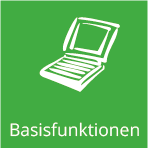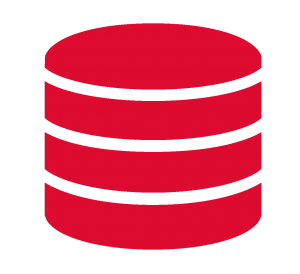ProStore®: Master data, basic functions and more

The basic functions include basic ProStore® functions and tasks as well as ProStore® configuration options for key users and system users.
Master data
- Article master data is transferred from the ERP solution to ProStore® via the interface. On the ProStore® side, this data is extended to include warehouse-specific attributes. Article images and documents (e.g. certificates, packaging instructions etc.) can also be assigned to each article.
- Administration of customer, supplier and forwarder master data
- ProStore® manages further master data such as
– Clients
– Owner
– Loading aids
– Storage topology
– Picking zones
– Transport Route Matrix
– ABC Classification
– Assignment of article – storage location and article
– Cost centers
– Criteria for supplier evaluations
– etc.
Inventory Management
Inventory management
- Management and overviews of stocks at container level, whereby a pallet or container can consist of one or more containers.
- Among other things, a container contains the batch information, a QA status for the qualitative classification of the container and a QP number (quality protocol), which, for example, enables the container to be reserved for a customer order.
- For each container, the MHD and RLZ information is stored. These can be parameterized in the master data for each article.
- In ProStore® stocks are managed in the product unit (PE). At the same time, it is possible to switch or convert stocks into packaging units (PU) in the dialogs.
- Sales or packaging units (CE) can be defined as currant or non-currant containers, i.e. with variable contents per CE.
- Management of pallet and container data (handling units) to perform key user tasks such as quantity splitting, repacking, quantity changes, etc.
- All inventory changes are sent to the ERP solution.
- Inventory movements are reported to the ERP solution if the storage locations concerned are also managed as separate storage locations in the ERP solution. Message generation can be configured via a corresponding assignment table of ProStore® and ERP storage locations.
- A cyclical inventory reconciliation with the ERP solution is possible. ProStore® is the inventory management system.
Quarantine period – QA lying time
- The QA lying time can be stored in hours in the article master record. Pallets from our own production with a QA lying time are taken as “GR blocked”. When the pallet is added, the expiry time is calculated and entered on the pallet.
- A cyclically running background process searches for pallets whose QA lying time has expired and automatically releases the pallets.
Monitoring minimum shelf life and remaining term
- The minimum shelf life in days and the remaining shelf life in days can be stored in the article master. When goods are received from production, the MHD and RLZ dates are calculated on the basis of the order date and stored on the pallet.
- A cyclically running background process checks daily whether the RLZ date or the MHD date has expired. If this is the case, the pallet is blocked, i.e. the QA status on the pallet is set to “SDR expired” or “BBD expired”. This blocking is logged. An e-mail is automatically sent to the configured recipient(s) if the appropriate setting is made.
- The operator can display specific stocks whose BBD and / or remaining time will soon expire or has expired. The operator can specify a time period, for example to select all stocks for which the defined remaining time will expire in the coming week.
Storage tasks
- ProStore® supports warehouse management with dynamic storage location allocation and fixed location management.
- By defining a storage zone, different storage locations can be logically combined.
- An ABC classification of the articles can be maintained manually or by an automatic calculation.
- Transfers of individual pallets within a storage location and between different storage locations can be initiated via a corresponding ProStore® dialog function. Ad hoc transfers in ProStore® can also be initiated by the forklift driver directly via the forklift control system.
- Management of transport trolleys (e.g. trolleys with several bins / compartments for storage order picking etc.)
- Reorganization of the storage areas based on various criteria such as ABC classification, fixed space allocation, shelf heights etc.
- The storage strategies are defined using the strategy engine.
Rights and role concept
- A consistent rights and roles concept enables flexible, customer-specific control of authorizations in the entire application.
- Standard profiles serve as a basis and can be adapted to individual requirements by means of own roles and authorizations.
- The assignment of rights is possible for the following elements: – Availability of dialogs – Execution of actions / functions – Management of configurations – Visibility and manipulation of data and fields
- Using additional groups, the configurable interface settings such as the search variants and result displays can be made available as required.
Multilingualism
Den ProStore® users are assigned a language by default.
When logging on to ProStore®, the default language is displayed, but it can be overwritten/hanged by the user.
In ProStore® all guide texts in the dialog masks are stored in database tables. Texts can be stored individually and in several languages.
The translation of German management texts into other languages is supported by ProStore®.
Message system
An automatic email/SMS notification is sent from ProStore® in the event of certain events (parameterizable). This is usually linked to protocol types. These are configured as e-mail events and assigned to a target address.
System and infrastructure
A wide range of options for configuring ProStore® and system components are available to key users and system users.
- Basic configurations within ProStore®
- Management of log types, messages and email events
- Management of dynamic tables
- Management of dialog constants
- Display of the system log journal
- Configuration of the VoiceConsole (Application of Pick by Voice)
- Administration of the GlassFish Application Server
- Configuration and administration of the web-based forklift control system
- Configuration of the web-based TEAM support tool




